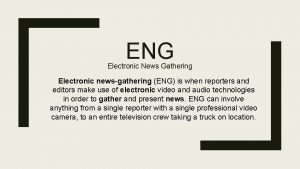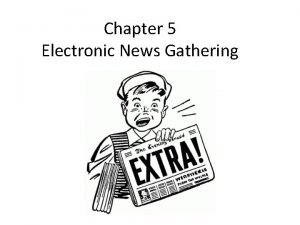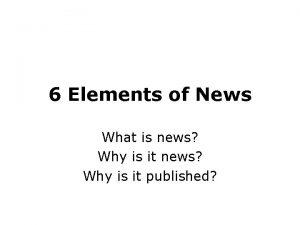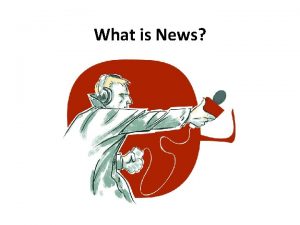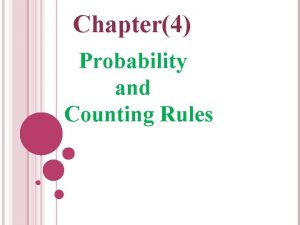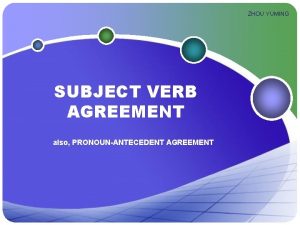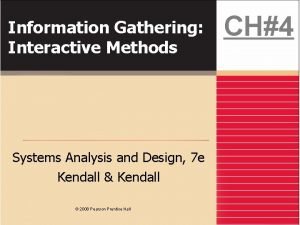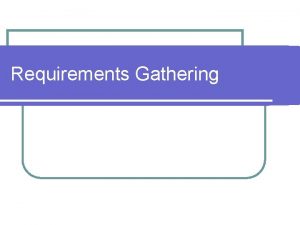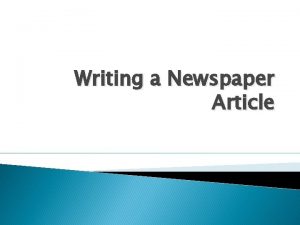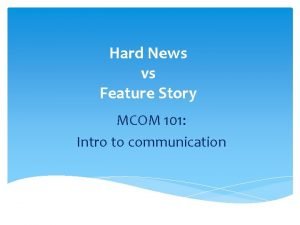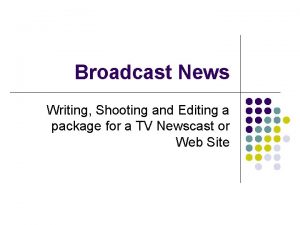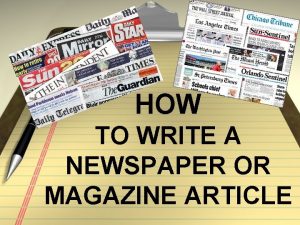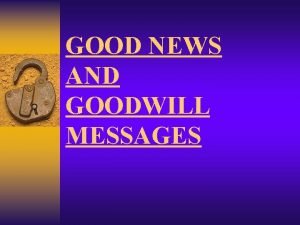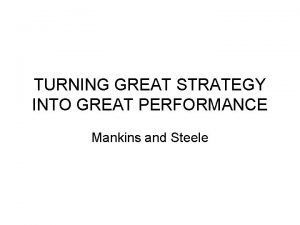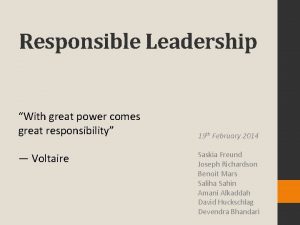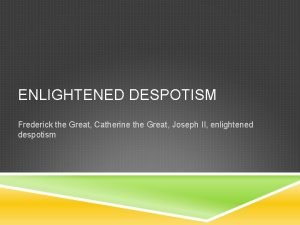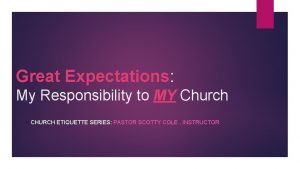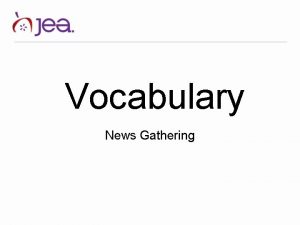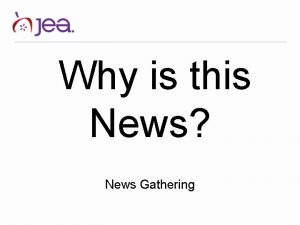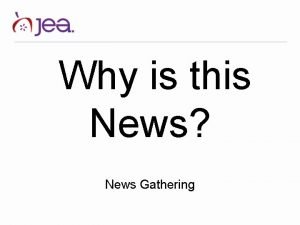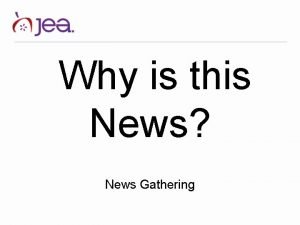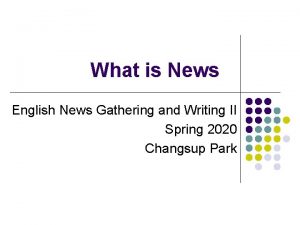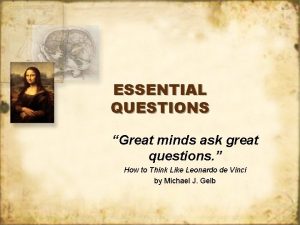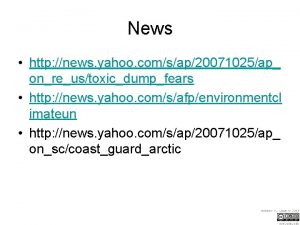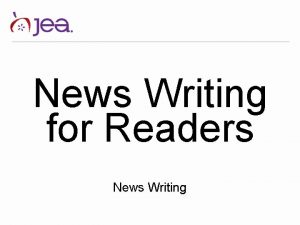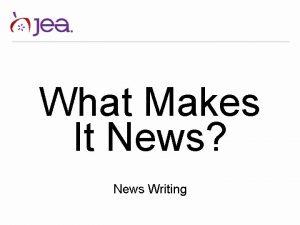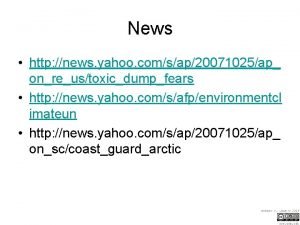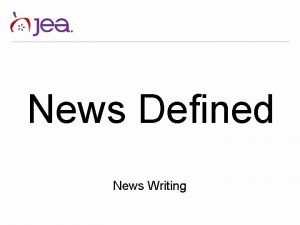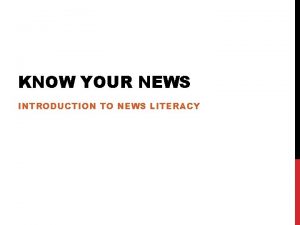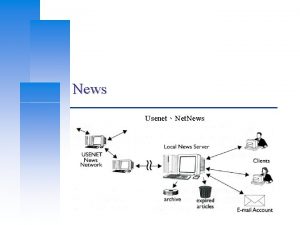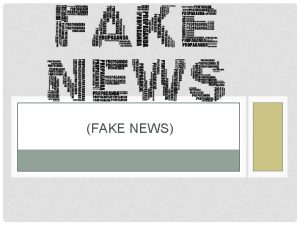How to Write Great Questions News Gathering 5






















- Slides: 22

How to Write Great Questions News Gathering

5 W’s and H who, what, when, where, why, how These are the building blocks of interview questions. They also can help you find an angle or focus to a story, figure out who to interview, and decide what you need to research.

Story Angle This is the specific approach or focus you will take to your topic. “Football” is a topic. Possible angles could be a game report, a season trend, or a player profile. “Fashion” is a topic. What to wear with boots in Florida is a story angle.

Story Angle Every story should have an angle or focus. Use news values to help you determine the best focus for your readers: Timeliness Proximity Conflict Consequence/ Impact Celebrity/ Prominence Human Interest Novelty/Oddity Currency

Story Angle: Rule of 8 News Values • 1. Did something interesting just happen recently? (timeliness) • 2. Did it happen nearby? (proximity) • 3. Does it affect the readers or viewers, or have some consequence for their lives? (impact/consequence) • 4. Is someone who is well known involved? (prominence/celebrity) • 5. Is it odd, rare, weird, a “first” or otherwise outside the ordinary? (oddity/rarity/novelty) • 6. Is there a conflict or disagreement? (conflict) • 7. Does it tug at the heart strings? (human interest) • 8. Is it related to something everyone is talking about in social media or other news media? (currency)

Story Angle: It’s all in the questions you ask. What happened? What’s important or surprising about this? What might happen because of this? When has this ever happened before? Why did this happen? Who cares? Why did this surprise me? How did this happen? How does this affect people?

Questions: Closed-ended and open-ended Closed-ended questions elicit yes or no responses or short one- or two-word answers. Open-ended questions require more fully developed responses. Open-ended questions produce the best quotes and information. What are some examples of each?

Two-part questions Sometimes you need to ask close-ended questions to get facts or basic information. Expand them with logical follow-up questions. For example: “What famous person would you love to meet? ” “What would you talk about? ”

Other types of questions that produce great answers Hypothetical: “What if …” Propose a scenario and ask your source to respond. Statistical: Ask your source to respond to statistical information, especially if the statistics are surprising or out-of-whack.

Other types of questions that produce great answers From outer space: Even when you know, act like you don’t. Your source will explain it to you and you’ll have a great quote. Devil’s advocate: Take a position you know your source does not agree with, and ask your source to react.

Other types of questions that produce great answers Personal experience: Ask your source for examples of his or her own personal experience with your topic. Or, tell your personal experience and ask your source to react. Not a question, but a request: Tell me about a time when … Describe what happened when … Tell me more about that.

No-fail follow-up questions • • Why? Can you tell me more about that? Would you explain … How did you feel when that happened? • What did you (or do you) think about … • How did that happen?

You try … Pair up with another student, preferably someone you don’t know well. Have a brief conversation with each other and try to find a specific story angle that you can write about. TIP: Ask open-ended questions to find out what’s special about your partner!

Assignment – Research and Write Questions For homework, do some basic research and find out key information about your source and topic. Then develop a list of open-ended questions for a follow-up interview. Make sure you have covered all 5 W’s and H.

Assignment – Research Tip Think of the overall topic. For example, if your source is a skateboarder, research local hotspots for skateboarders, skateboarding tricks and skateboarders in the news. Try reading articles that others have written about skateboarders. What did they ask?

What’s next … Next class meeting, you will interview each other for 15 minutes each. Make sure you can record your interview with an audio device or recording app on your phone. You must also take notes.

After the interview Transcribe your interview for homework. Make your quotes copy-ready. This transcription should contain a brief introduction of background information on your source.

Other sources You should always strive for a minimum of three sources in every story. 1) The main/key individual (that’s your partner) 2) An expert – to provide credibility and background. Usually an adult. 3) A back-up source to corroborate or confirm what your main source said. - OR - A contradictory source for an alternate point of view.

Other sources Find two more sources who can add to your story and write questions for them. Possibilities: • Coach or teacher • Mom or Dad • Best friend or good friend or old friend • Team member • Brother, sister, cousin, other family member

Final Assignment – Turn in: 1. Your research notes. 2. Your questions and transcribed notes/quotes from your main source. Make sure you include your partner’s name and grade level! 3. Your questions for two additional sources (say who they would be). 4. In addition, you must answer this two-part reflection question: Which of your questions got the best responses? Why do you think those questions worked better than others?

Optional assignment follows.

Profile Story Following the evaluation of your interviews, write a 250 -350 word profile story about your partner. Focus on one angle about your subject that makes him or her special.
 News gathering definition
News gathering definition Electronic news gathering (eng)
Electronic news gathering (eng) Electronic news gathering equipment
Electronic news gathering equipment Timeliness news example
Timeliness news example Electronic field production
Electronic field production What is hard news
What is hard news Chapter 4 probability and counting rules answer key
Chapter 4 probability and counting rules answer key Both of the statues on the shelf is broken
Both of the statues on the shelf is broken Information gathering interview questions
Information gathering interview questions Requirements gathering interview questions
Requirements gathering interview questions Writing newspaper article
Writing newspaper article What is feature story
What is feature story Broadcast news package
Broadcast news package How to write a news paper article
How to write a news paper article Goodwill messages
Goodwill messages How to write a breaking news story
How to write a breaking news story Turning great strategy into great performance
Turning great strategy into great performance South dakota's state animal
South dakota's state animal Great power comes with great responsibility
Great power comes with great responsibility Great white shark and hammerhead shark
Great white shark and hammerhead shark Did alexander the great deserve to be called great
Did alexander the great deserve to be called great Enlightened despot
Enlightened despot With great expectations comes great responsibility
With great expectations comes great responsibility

